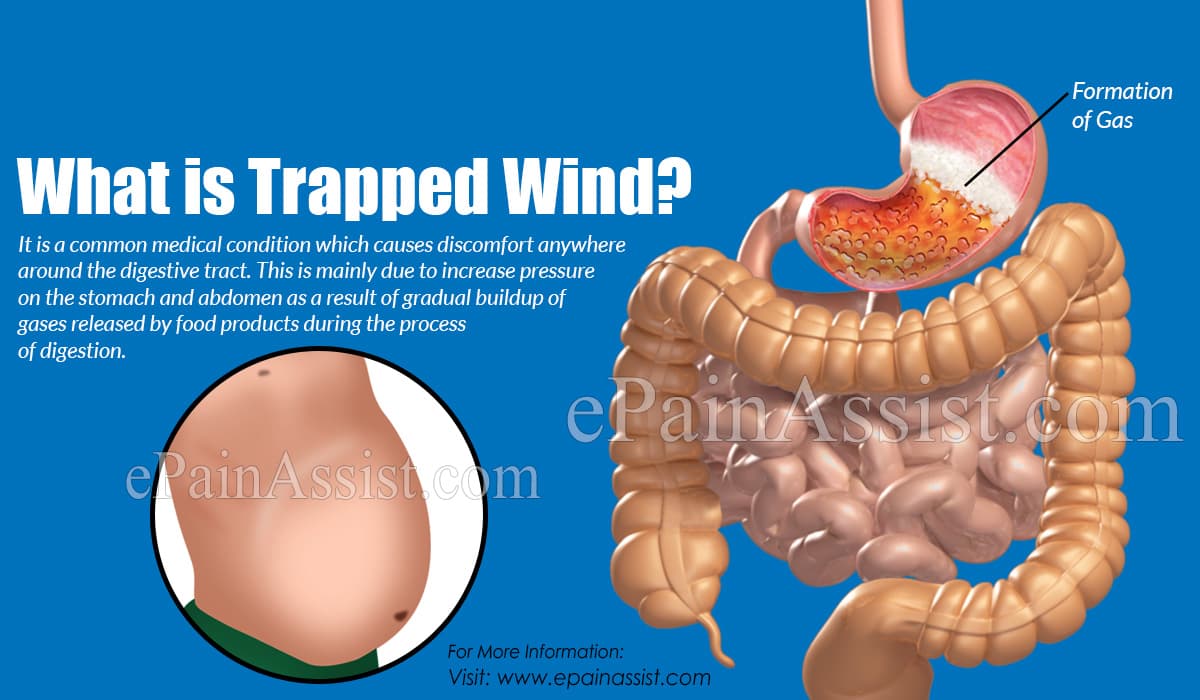What is Trapped Wind?
Trapped Wind is a common medical condition which causes discomfort anywhere around the digestive tract. This is mainly due to increase pressure on the stomach and abdomen as a result of gradual buildup of gases released by food products during the process of digestion. Trapped Wind can affect any area within the digestive system resulting in a variety of symptoms to include bloating, gas, burps, and belching. Normally an individual passes gas at least 10 times daily but in cases of Trapped Wind this number goes up exponentially. In some cases flatulence may also cause pain due to Trapped Wind.
After eating food, the digestive process starts with absorption of the food. During this process depending on the food that has been eaten various gasses are released.
Majority of the gasses released get absorbed by the body and the remaining gets eliminated by flatulence. In people with Trapped Wind, there is gradual accumulation of gasses within the digestive tract usually caused by foods which remain undigested.

This excess gas that remains within the digestive system is what causes Trapped Wind as it is not able to exit the body and causes symptoms. Stomach pain is the most common symptoms of Trapped Wind. However, there may be different causes for stomach pain. This article gives an overview of how to know that stomach pain is caused due to Trapped Wind.
How To Know If My Stomach Pain is Caused By Trapped Wind and How to Prevent It?
To know if the stomach pain is caused due to Trapped Wind is by identifying the associated symptoms. In cases of Trapped Wind, along with stomach pain, the individual will have frequent bouts of burping and belching. The individual will pass gas more frequently. The pain will become worse when bending to pick something up or putting any strain on the abdominal muscles.
The pain caused due to Trapped Wind will also become worse when lying down to go to bed or with any form of exercise. If the individual has these symptoms along with the stomach pain then it can be said that the pain is due to Trapped Wind.
Living with a condition like Trapped Wind may be quite difficult. There are medications that treat the condition effectively; however if certain preventive measures are taken then one can avoid getting affected with Trapped Wind.
The measures to prevent Trapped Wind include avoiding or eating in moderation those foods that are known to cause gas like onions, cauliflower, broccoli, sprouts, cabbage, and potato and concentrate more on vegetables that are healthy like green and leafy vegetables and salads. Also avoid processed foods which contain saturated fats which are hard to digest and release gasses that are not able to be eliminated from the body.
Artificial sweeteners are also something that one should avoid to prevent Trapped Wind. Spice should be added to foods only in moderation. Eating too mush spicy food also produces excess gas, specifically for those individuals who are not habituated to eating hot and spicy foods.
When it comes to drinking beverages, drinking with a straw should be avoided as this results in the individual swallowing air which is another common cause of Trapped Wind. Also one should avoid speaking while eating. This also results in the individual swallowing air causing Trapped Wind.
Studies have shown that prolonged sitting also causes buildup of gas resulting in symptoms characteristic of Trapped Wind. People should take frequent breaks at work to stretch the abdominal muscles and release any gas that may have accumulated.
Exercising regularly not only keeps an individual fit but also prevents medical conditions like Trapped Wind. Massaging the abdomen regularly, especially after a large meal or eating outside to move the gas that may have been accumulated to prevent symptoms of Trapped Wind.
